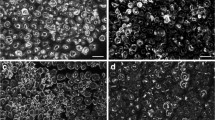Abstract
Thirty-two patients with a peripheral neuropathy and paraproteinemia were tested for IgM antibodies against myelin-associated protein (MAG) and sulfatide by means of enzyme-linked immunosorbent assay. Nine patients (28%) had increased anti-sulfatide IgM antibodies and showed a chronic, slowly progressive, distally pronounced, and symmetric polyneuropathy with sensory to sensory-motor impairment, ataxia, hyporeflexia, and axonal involvement in electrophysiological studies. Ten patients (31%) with increased anti-MAG antibodies had a similar, homogeneous polyneuropathy syndrome but presented with demyelinating features. A weak crossreactivity between anti-MAG and anti-sulfatide antibodies was present in only three patients. In conclusion, although the two neuropathy groups clearly differed in their electrophysiological features, their clinical presentation was rather similar.
Similar content being viewed by others
Author information
Authors and Affiliations
Additional information
Received: 19 July 1999 / Received in revised form: 23 December 1999 / Accepted: 2 May 2000
Rights and permissions
About this article
Cite this article
Erb, S., Ferracin, F., Fuhr, P. et al. Polyneuropathy attributes: a comparison between patients with anti-MAG and anti-sulfatide antibodies. J Neurol 247, 767–772 (2000). https://doi.org/10.1007/s004150070090
Issue Date:
DOI: https://doi.org/10.1007/s004150070090




